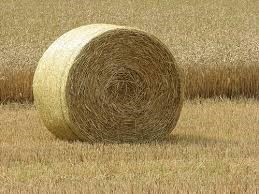Haying continues in the province. Livestock producers now have 54 per cent of the hay crop baled or put into silage, with an additional 18 per cent cut and ready for baling, according to Saskatchewan Agriculture’s weekly Crop Report.
Rain showers have delayed haying in some areas. Hay quality is currently rated as two per cent excellent, 52 per cent good, 38 per cent fair and eight per cent poor. Hay yields on dry land are well below the five year average (2010-2014). Average hay yields on dry land are estimated to be 0.8 ton per acre for alfalfa, 0.9 ton per acre for alfalfa/brome hay, 0.7 ton per acre for both other tame hay and wild hay, and 1.3 tons per acre for greenfeed. On irrigated land, average hay yields are estimated to be 2.2 tons per acre for alfalfa and alfalfa/brome hay, 2.5 tons per acre for other tame hay, 1.9 tons per acre for wild hay, and 3.1 tons per acre for greenfeed.
The Ministry of Agriculture has a Forage, Feed and Custom Service listing for producers to advertise and source feed products. It is available at www.agriculture.gov.sk.ca/FeedForageListing.
Much of the province received rain last week that has helped alleviate moisture stress in some regions. Rainfall ranged from small amounts to several inches. Topsoil moisture conditions have slightly improved in many areas. Provincially, topsoil moisture conditions on cropland are rated as two per cent surplus, 52 per cent adequate, 33 per cent short and 13 per cent very short. Hay land and pasture topsoil moisture is rated as one per cent surplus, 36 per cent adequate, 43 per cent short and 20 per cent very short.
Sixty-six per cent of fall cereals, 68 per cent of spring cereals, 64 per cent of oilseeds and 63 per cent of pulse crops are at their normal stages of development for this time of year. Crops are ripening quickly, although the majority remain in poor-to-good condition. Lack of moisture and insects such as grasshoppers and aphids have caused the most crop damage this week.
Farmers are busy cutting hay, controlling pests and readying harvest equipment.
Follow the 2015 Crop Report on Twitter at @SKAgriculture.




